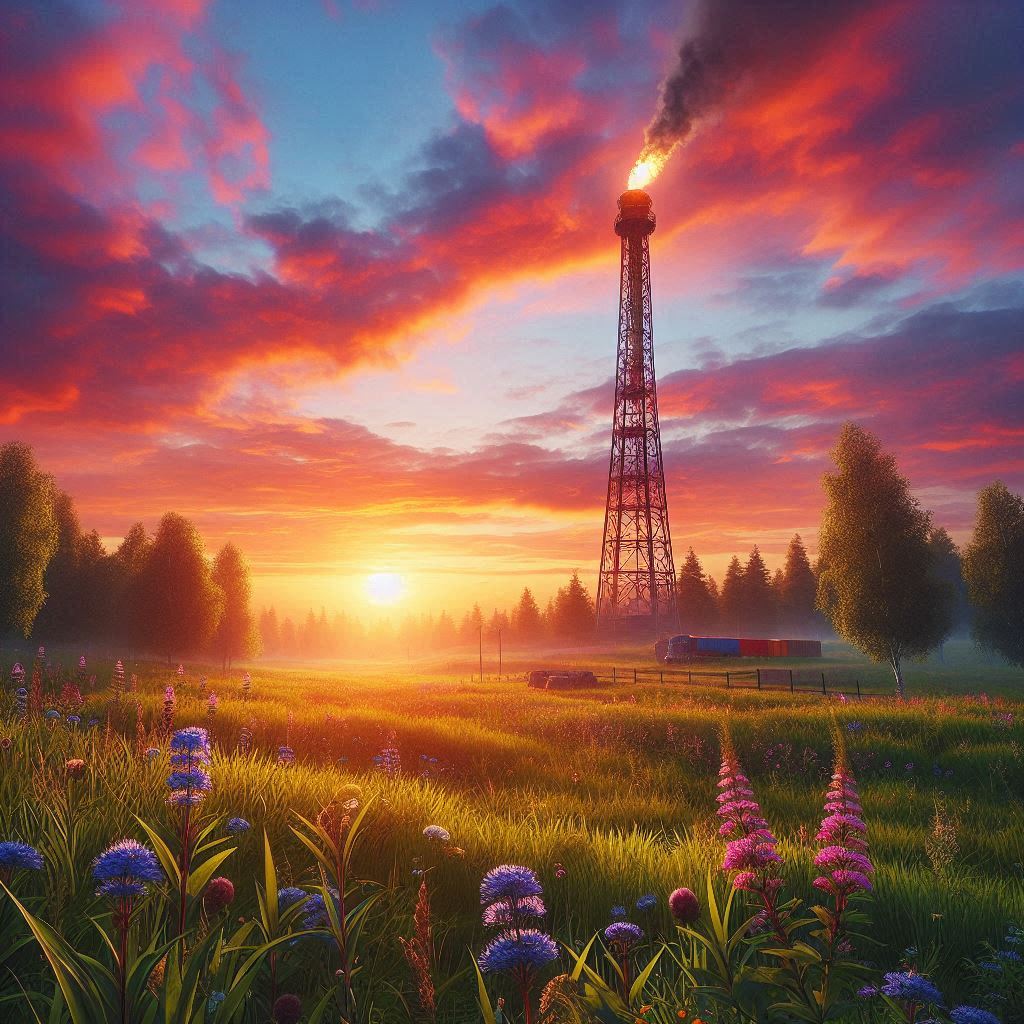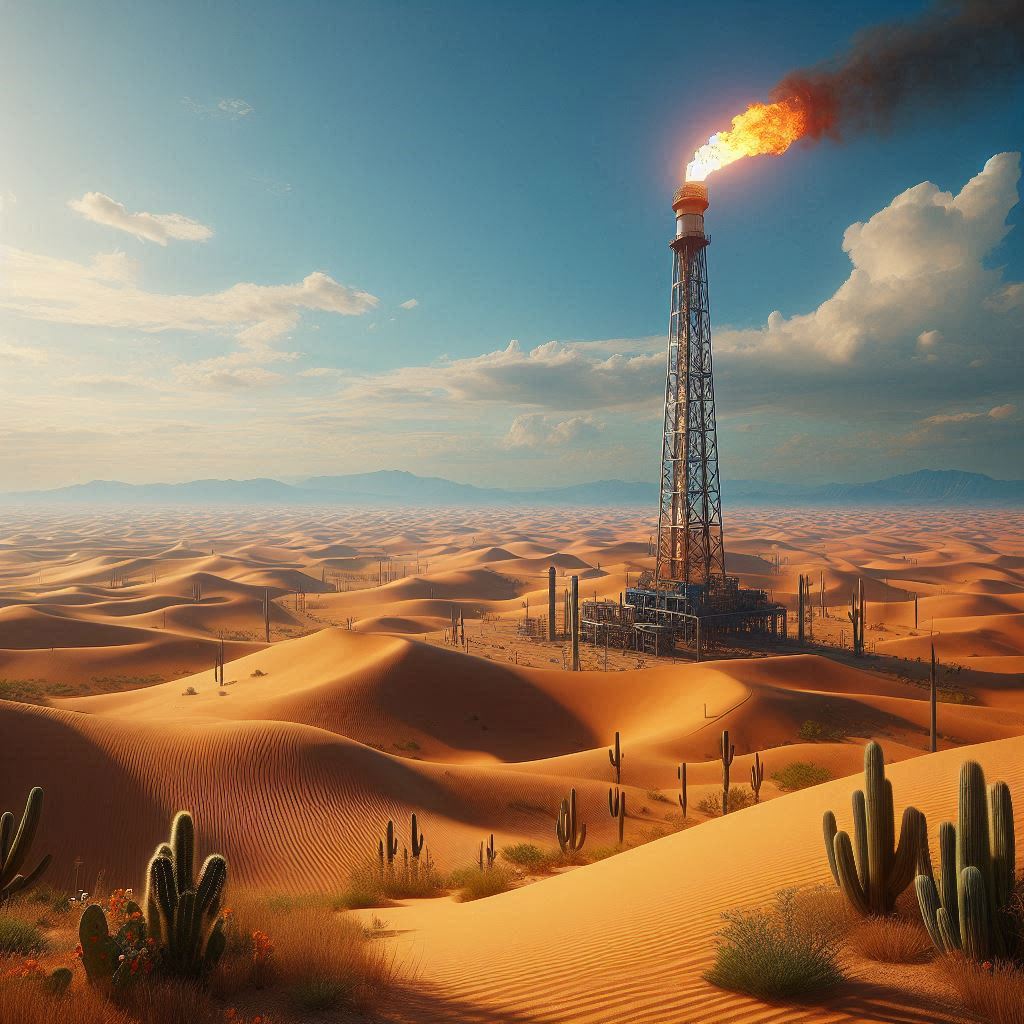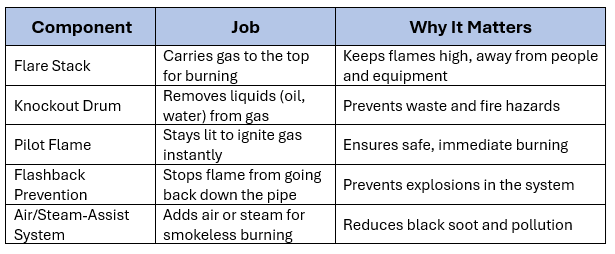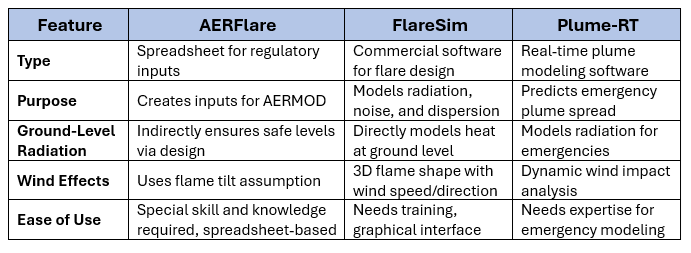- Air Homepage
- Air Quality Testing
- Output So2
- What Is Gas Flaring
Discover What is Gas Flaring - It Protects Lives and Sparks Environmental Debate
Imagine, for a moment, you're driving by a giant oil and gas plant with tall pipes towering over the ground. A bright flame dances in the sky at the top of one. At that time, would you wonder, what is gas flaring?
Flaring Paradox: Safety, Pollution, and AERFlare - Why is the fiery plume over the oil field both a life-saving safety feature and a major pollution source? Discover how flaring technology works, the environmental impacts, and the powerful AER tool used to regulate flames.
 Flare stack with fire and Emissions
Flare stack with fire and EmissionsFlare stacks are used in places like oil fields, refineries, and chemical plants to burn off extra gases. By preventing dangerous explosions, flaring protects workers and equipment. But flares can also pollute the air and waste resources.
In this article, we'll learn how flares work, why they're important, how they affect the environment, and how we use AERFlare to keep them working safely and efficiently. I've got a tale that will spark your interest, whether you're a student or a professional evaluating flares for regulations.
Safety's Fiery Guardian
Oil and gas plants drill deep into the ground to find crude oil, digging for treasure. Along with oil, they find natural gas, a flammable friend that can be dangerous. During emergencies, their machines might build up too much gas pressure, like a balloon about to pop. Here's where the emergency flare comes in!
What is gas flaring's advantage here? A tall stack burns the extra gas safely, keeping everyone nearby safe from explosions.
There's more to flares than emergencies. Plants release gas when they start up, shut down, or need maintenance. Why release it?
In remote places, like a desert or northern oil field, there might not be pipes to carry the gas away for sale, so it gets flared instead, like throwing away extra apples because you can't carry them all. Burning methane (a strong greenhouse gas) into carbon dioxide (less harmful) and water helps the environment on one level. Compared to venting, where raw gas was released straight into the air, like a stink cloud. The smell usually comes from hydrogen sulphide, or H₂S.
What is Gas Flaring in an Integrated System?
Flare systems work together to keep the flame clean and safe. Here's the crew:
- A flare stack is a tall tower where gas goes up to burn, like a lighthouse.
- A knockout drum catches liquids (like oil or water) in the gas, so only gas reaches the flame, like a strainer.
- An always-on flame at the top of the stack to light the gas instantly.
- A flashback prevention device prevents the flame from traveling back down the pipe, like a dragon's cave gate.
- This system adds air or steam to mix the gas better, making the flame burn cleanly without black smoke, like stirring a potion.
What is gas flaring design used for? Here is a summary of the parts in a Flaring System.
The Problem with Flares
While flares are safety heroes, they also have a dark side. What is gas flaring typically criticized for? As they burn gas, they release carbon dioxide (CO₂), leftover methane (CH₄), black carbon (soot), H₂S, and volatile organic compounds (VOCs). When the flame doesn't burn perfectly, it's like a campfire that smokes too much, releasing harmful stuff like benzene and sometimes dioxins and furans, which can make you sick with headaches, breathing problems, or even cancer. These pollutants also add to climate change.
It's also wasteful, like throwing away food instead of cooking it. Gas that goes to disposal (burning) could power homes if it could be captured and delivered easily. Flaring also happens the energy industry in Texas, the Middle East, and Russia because building pipelines to channel it elsewhere is expensive, especially in remote areas. As the world changes, people want to stop routine flaring and use gas for better things, like electricity generation.
AERFlare to the Rescue
In Alberta, Canada, the Alberta Energy Regulator (AER) uses an evaluation tool called AERFlare, an integrated system based on an Excel spreadsheet that helps plants, engineers, consultants and regulators see if these flares are safe and follow rules (like those outlined in Directive 060). What is gas flaring modelling?
Acting as a superhero calculator, AERFlare uses programs to determine how much pollution a flare makes and how it disperses (spreads) stuff in the air. Pseudo-parameters (like gas speed and stack height that include flame-induced extra heat) are created to plug into air quality models like AERMOD, which predicts where pollutants go based on wind and weather. Using a varying flame-tilt, it estimates how wind affects the flame, while guiding users to ensure safe ground-level radiation (heat) levels.
AERFlare may seem great for beginners, such as an industry professional new to air quality. It's not as fancy as expensive tools like Flaresim, which draws 3D flame pictures and checks heat, noise, and pollution. With Flaresim, you can see exactly how the wind bends the flame and where the heat goes. Another option, Plume-RT, predicts pollution in real-time emergencies. Have a look at this comparison:
Here's how flare modelling tools compare:
Where does AERFlare shine? For new projects needing flare evaluations, AERFlare is user-friendly and meets Alberta's strict rules. It's like a beginner's guide to ensuring your flare follows pollution and safety limits. For greatly detailed design, Flaresim's 3D modeling gives a clearer picture of flame behavior, and it's preferred for bigger international projects.
Flares around the World
Flares are regulated differently in different regions. Here are a few…
USA, Texas:
- Railroad Commission of Texas (RRC) Rule 32 allows flaring for 10 days after a well starts, with permits for longer if needed. TCEQ sets air quality limits.
- The state of Texas is lenient, approving almost all flare permits, but the federal Clean Air Act puts a lot of pressure on flares to reduce emissions.
- Uses API 521 (a global flare design guide) and AERMOD for air modelling, which Alberta uses too.
- Emergency Planning Zones (EPZs): Required under the EPA's Risk Management Plan (RMP), ensuring safe distances from heat and pollution.
 The Mojave Desert ablaze with flares
The Mojave Desert ablaze with flaresMiddle East (including Saudi Arabia):
- Saudi Aramco has strict internal standards (SAEP, SAES) to cut flaring, backed by the Master Gas System.
- Industrial zones are regulated by the Royal Commission.
- Violations are fined within state companies. Safety is overseen by the National Center for Environmental Compliance (NCEC).
- Models using API 521, Flaresim, and Plume-RT.
- Mandated by Aramco and the Royal Commission, EPZs ensure flare placement is safe.
Russia:
- Federal Decree No. 1148 limits flaring to a small percentage of associated gas.
- Weak enforcement due to gaps and lobbying, but penalties are going up. Satellite data shows there's more flaring than reported.
- Tools like Flaresim and ISO 25457 (similar to API 521) are used.
- Environmental protection zones: Required by law, set up by companies like Sakhalin Energy.
Here's a comparison of regulations in these regions:

A Greener Future
Flares used to be an industry champion because they turn methane into less harmful CO₂ and H₂S into SO₂ which is also an improvement, but now they're seen as wasteful. By 2030, the world wants to stop routine flaring. Instead of burning gas, we could:
- Use it to power homes or power plants,
- Pump gas back into the ground to get more oil, like recycling water to pressurize a fountain,
- Turn gas into liquid fuels for easier transportation, squeezing juice from it like fruit, or
- Install pipelines to get gas to markets, just like we need roads for trade.
When it comes to evaluating flare pollution-impact, AERFlare is a great place to start. It's relatively easy (for someone who knows about air quality and industrial processes), meets Alberta's rules, and works with AERMOD to analyze pollution spread. Credible. We can tame flares by understanding them, keeping us safe and protecting the planet!
Mission to Consider
Let's make flares cleaner. For quick regulatory checks, use AERFlare, but invest in Flaresim if you really need these kind of detailed designs to reduce pollution. To save resources and cut emissions, push for gas capture systems.
Keep emergency planning zones (EPZs) to keep workers and communities safe from flare heat and toxic gases. Keep an eye out for new ideas, like mobile gas processors, while keeping our projects organized and socially acceptable.
While protecting lives, gas flares can harm communities by releasing pollutants like H₂S and SO₂, which threaten our health and the environment. As a compassionate leader, you want your operations to be safe and sustainable.
Our expert air quality dispersion modelling services offer exceptional value, guiding you through tools like AERFlare and Flaresim to assess flares' environmental impact. They ensure regulatory compliance, minimize risks, and protect nearby families.
Partner with Calvin Consulting to spark a cleaner future and don't let harmful emissions dim your legacy. Send us a query at:

...for innovative, community-oriented solutions to responsibly evaluate the air quality impact your operations.
Clean air is our Passion...Regulatory Compliance is our Business.
Flaring protects oil and gas plants by burning off volatile gases, preventing explosions, and keeping workers safe.
Incomplete combustion releases harmful pollutants like benzene and soot, but alternatives, like gas reinjection, promise cleaner air. Flaresim analyzes wind effects on flames, AERFlare models emissions for regulatory compliance.
Do you have concerns about air pollution in your area??
Perhaps modelling air pollution will provide the answers to your question.
That is what I do on a full-time basis. Find out if it is necessary for your project.
Have your Say...
on the StuffintheAir facebook page
Other topics listed in these guides:
The Stuff-in-the-Air Site Map
And,
Thank you to my research and writing assistants, ChatGPT and WordTune, as well as Wombo and others for the images.
OpenAI's large-scale language generation model (and others provided by Google and Meta), helped generate this text. As soon as draft language is generated, the author reviews, edits, and revises it to their own liking and is responsible for the content.




New! Comments
Do you like what you see here? Please let us know in the box below.